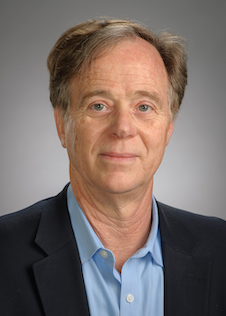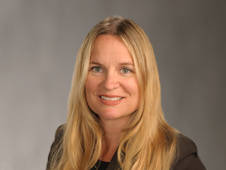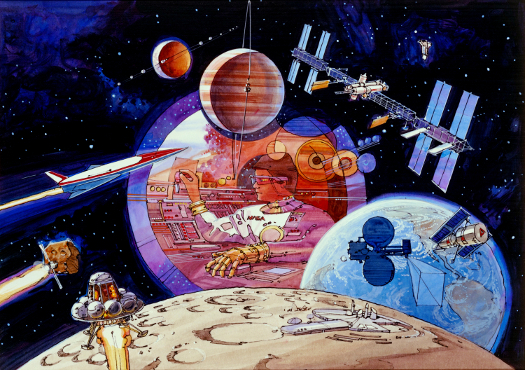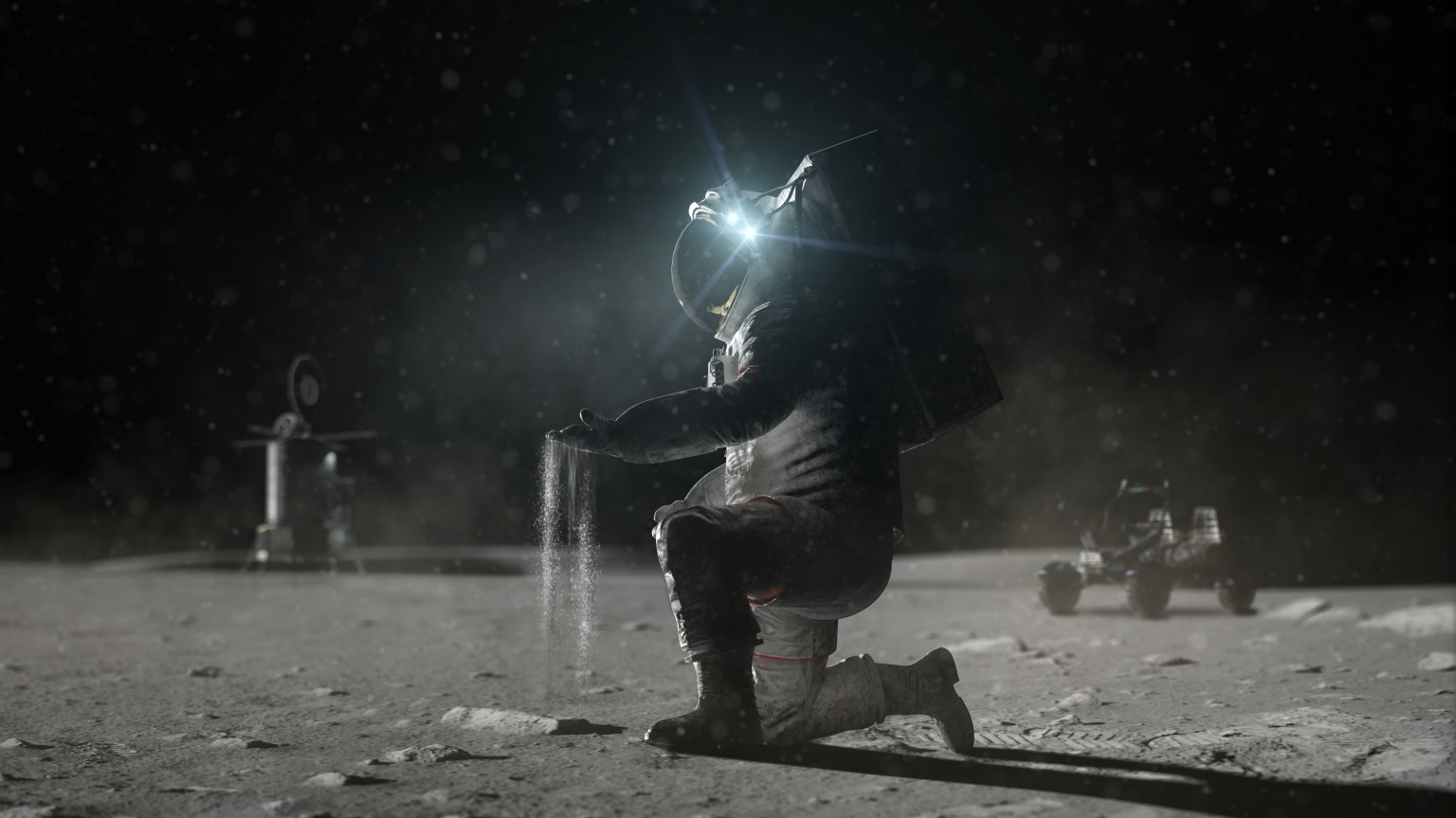About Ames CCT
The Ames Center Chief Technologist (CCT) serves as the principal advisor and advocate on matters concerning Center technology initiatives, and is responsible for coordinating and tracking technology investments across the Center. The CCT Office also serves as the Center’s technology point of entry and contact with the Agency’s Office of the Chief Technologist (OCT), other NASA Centers, government agencies, academia and the commercial aerospace community. The Office is responsible for developing and executing innovative technology partnerships, technology transfer and commercial activities and the development of technology collaboration models for the Center. Select CCT overviews and presentations are provided below.
Chief Technologist
Harry Partridge
Deputy Chief Technologist
Jill Bauman
The CCT Office provides a technology and innovation focus for Ames through the following goals and responsibilities:
Serve as principal Center advisor on matters concerning technology and innovation initiatives.
Serve as principal up-and-out advocate for ARC technology initiatives by communicating and integrating with technology efforts at other NASA Centers, other Agencies, across academia, industry, and other research institutions.
Manage the solicitation, evaluation, review and award of the Center Innovation Fund (CIF).
Initiate, coordinate and integrate technology investments across the Center, including mission-focused technology development activities supporting the NASA Mission Directorates, which “pull” technology development based upon established Mission needs, and Office of the Chief Technologist (OCT ) initiatives that perform “push” technology development and demonstration.
Change culture at the Center towards one of creativity and innovation, particularly in regard to workforce development.
Document/demonstrate/communicate societal impact of the Center’s technology investments, by leading technology transfer and commercialization opportunities for the Center.
Harry Partridge
 Dr. Harry Partridge is the Ames Center Chief Technologist (CCT), and as such identifies, defines, develops and integrates new and emerging technologies for application to Agency and national goals through the NASA Space Technology Mission Directorate (STMD). Harry reports to Center management and serves as the principal advisor to the Center leadership on matters concerning Center-wide technology development and leverage. His duties include representation on the Agency-wide Center Chief Technologist’s Council and management of the Center Innovation Fund, and he also serves as Center point-of-contact to the Office of the Chief Technologist (OCT).
Dr. Harry Partridge is the Ames Center Chief Technologist (CCT), and as such identifies, defines, develops and integrates new and emerging technologies for application to Agency and national goals through the NASA Space Technology Mission Directorate (STMD). Harry reports to Center management and serves as the principal advisor to the Center leadership on matters concerning Center-wide technology development and leverage. His duties include representation on the Agency-wide Center Chief Technologist’s Council and management of the Center Innovation Fund, and he also serves as Center point-of-contact to the Office of the Chief Technologist (OCT).
In addition to his role as the CCT, Harry continues to serve as the Senior Technology Officer for the STP within OCT. In this role he serves as the chief technologist for the 10 programs within STP, and is a member of the OCT senior leadership team.
Previously, Harry was the Deputy Director of the Game Changing Technology Division at NASA Headquarters. While at Ames, he was the Deputy Director of the Entry Systems and Technology Division and was responsible for managing the entire range of entry system technology developments from foundational research on thermal protection materials development, to thermal protection system design, development, testing and evaluation for flight systems such as Mars Science Laboratory and Orion. In addition, he served as the Branch Chief of the Nanotechnology Branch at Ames and the program manager for the Bio-nano project within the Computing, Information and Communications Technology program. Harry received his PhD from Indiana University in Chemical Physics and has published approximately 190 papers in computational chemistry.
Jill Bauman
 Dr. Jill J. Bauman earned a B.S. in Physics at the University of Florida while working in the Micro-Kelvin Laboratory, one of the premier low-temperature centers in the world. There she developed and tested radiation shielding materials and diffusion welding techniques for nuclear demagnetization refrigerators. She earned an M.S. degree in Physical Oceanography from the State University of New York (SUNY), Stony Brook, in the Marine Sciences Research Center. During this time, she held a Research Associate position at Brookhaven National Laboratory where she conducted her thesis to understand the correlation between oceanic phytoplankton biomass and global cloud albedo. Dr. Bauman earned a Ph.D. in Atmospheric Physics from the Institute for Terrestrial and Planetary Atmospheres, SUNY. During this time she conducted her dissertation research in the Atmospheric Physics Branch at NASA Ames Research Center. During her residency at Ames she became interested in space flight mission implementation and attended the International Space University in Barcelona.
Dr. Jill J. Bauman earned a B.S. in Physics at the University of Florida while working in the Micro-Kelvin Laboratory, one of the premier low-temperature centers in the world. There she developed and tested radiation shielding materials and diffusion welding techniques for nuclear demagnetization refrigerators. She earned an M.S. degree in Physical Oceanography from the State University of New York (SUNY), Stony Brook, in the Marine Sciences Research Center. During this time, she held a Research Associate position at Brookhaven National Laboratory where she conducted her thesis to understand the correlation between oceanic phytoplankton biomass and global cloud albedo. Dr. Bauman earned a Ph.D. in Atmospheric Physics from the Institute for Terrestrial and Planetary Atmospheres, SUNY. During this time she conducted her dissertation research in the Atmospheric Physics Branch at NASA Ames Research Center. During her residency at Ames she became interested in space flight mission implementation and attended the International Space University in Barcelona.
In 2000, Dr. Bauman accepted a civil service position at Ames in the Advanced Concepts Development Branch within the Projects Division. She spent the next several years managing project and instrument teams during concept development for space flight, and served as proposal and instrument manager and science co-investigator on numerous proposals. Through NASA’s Leadership Development Program, she was detailed to the Jet Propulsion Laboratory (JPL) to work in the Jupiter Icy Moons Orbiter (JIMO) Project Office. She helped lead and manage the development, integration and implementation of the JIMO Reentry Aeroshell Team. Dr. Bauman was also detailed to Kennedy Space Center as Mission Integration Manager for the Kepler mission. After returning to Ames, she became Branch Chief for Systems and Project Engineering and spent three years providing technical direction to an engineering staff of nearly 40 and managing the systems engineering resources and capabilities required to formulate and implement successful space flight projects.
Dr. Bauman then served for four years as the Associate Director of Science for Mission Concepts, the Directorate’s focal point for new mission opportunities and lead interface between the Science, Engineering, Space Projects and New Business Directorates for all new mission concept planning and development. In this capacity she was responsible for reviewing the technical, management and cost elements of projects; analyzing project risk; determining system and sub-system technical readiness; identifying the resources required to formulate advance mission concepts; and managing and providing technical direction to project teams. She currently serves as the Deputy Chief Technologist at NASA Ames, where she helped draft the Agency’s Technology Roadmaps. She reviews the Center’s new technologies to determine mission critical needs that may be filled by such technologies, initiates and reviews potential inter-Center and external collaborations for low TRL technology investments, and assesses the Center’s technology portfolio for strategic maturation planning.






























